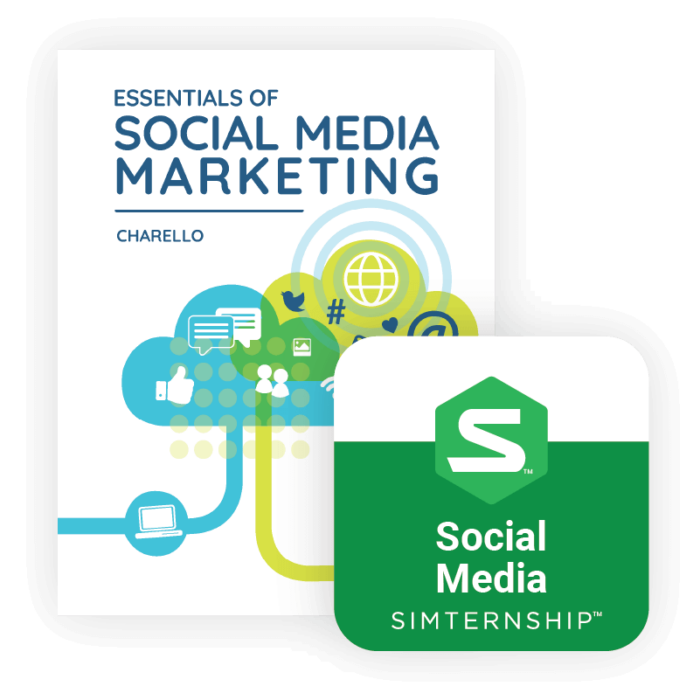A decade ago, influencer marketing was reserved for actors, sports stars, and models. Now there are influencers everywhere. Their followings vary in size, yet they can significantly impact a business.
So, what does it take to run a successful influencer campaign? Whether you’re a marketer exploring influencer marketing for the first time or a student preparing for a marketing career, here are four key considerations for crafting an influencer campaign.
1. Leveraging Micro- and Nano-Influencers
Micro-influencers and nano-influencers can create relatable and authentic awareness for your brand. These individuals, with their smaller yet highly engaged followings, are invaluable for connecting with your audience.
According to Built In, “A micro-influencer has a social media presence larger than a normal person’s but smaller than a celebrity’s, landing between 1,000 and 100,000 followers. (Some say anything less than 10,000 followers makes someone a nano-influencer.)”
Keri Jaehnig, the founder and CEO of Idea Girl Media, said that many brands are now taking more thoughtful steps before collaborating with an influencer, focusing on the engagement from the influencer’s audience and the need to share an authentic experience. This approach not only adds credibility to the partnership but also fosters longer-term relationships with influencers who are seen as regular, relatable individuals rather than untouchable celebrities.
“There will always be big brands wanting to work with a Kardashian or sports hero,” Keri said. “But the regular-person influencer results in a longer-term relationship with a brand, in my opinion.”
Josie Stockman, a digital marketing specialist at International Business Seminars, has also seen the shift toward working with influencers who have smaller but highly engaged audiences.
“These influencers tend to have niche communities and often offer better engagement rates compared to macro-influencers,” Josie said. For local businesses, leveraging the influence of a micro-influencer within their area who shares a similar niche can be particularly effective.
An example of a successful campaign comes from Ketsia Colas-Leroy, a marketing consultant. For Valentine’s Day, she helped her client turn their special five-course menu into the talk of the town, resulting in fully booked evenings.
Ketsia focused on local influencers and content creators on TikTok and Instagram, targeting those with an engaged audience that often saves and shares content. She reached out via DMs and email, detailing the campaign vision and what was expected from the influencers. After negotiating, an influencer visited the restaurant to showcase the menu and encourage bookings.
“It felt genuine, like a friend giving you the inside scoop on where to dine out,” Ketsia said. “And the results? The restaurant was booked up completely and saw more foot traffic coming into the restaurant.”
The restaurant also saw a noticeable boost in social media followers and engagement. Overall, the campaign was a success, and left a powerful impression on Ketsia.
“This whole experience has me convinced that teaming up with local influencers is the way to go,” Ketsia said. “They bring our offerings to life in a way that feels real and personal, which is exactly what draws people in. Partnering up with influencers remains one of my favorite methods in my playbook for spreading the word and connecting with more folks who’ll love what we’re all about.”
2. Embracing Authenticity and Trust
When it comes to influencer marketing, success hinges not on follower counts but on the genuine relationships and trust that influencers build with their followers.
One emerging trend is the shift toward long-term partnerships between brands and influencers rather than one-off promotional campaigns. Ryan Esco, the chief marketing officer at FireRock Marketing, observed that ongoing collaborations yield authentic content and stronger audience engagement.
Ryan shared an example that involved a start-up offering eco-friendly home cleaning products. Given the niche market and the increasing consumer interest in sustainability, his team decided to partner with micro-influencers who shared genuine enthusiasm for green living.
“We handpicked influencers not just for their follower numbers but for their authentic connection to eco-friendly practices,” Ryan said. “Instead of scripted endorsements, we encouraged influencers to share their stories about transitioning to more sustainable living, incorporating our client’s products into this narrative. This approach ensured the content was organic and relatable.”
The campaign led to a 150% increase in engagement on his client’s social media platforms and a 30% uptick in sales over three months. The influencers’ genuine testimonials, backed by their eco-conscious lifestyle, resonated strongly with their audience, substantiating the effectiveness of authentic influence over sheer follower count.
User-generated content (UGC) can also help create trust and authentic brand awareness for your brand.
Brooke Webber, head of marketing at Ninja Patches, highlights the importance of user-generated content in influencer campaigns. She points out that encouraging influencers to prompt their followers to share personal brand-related stories widens reach and cultivates a more engaged and loyal customer base.
“Seeing real people share real stories has significantly boosted our brand’s credibility and appeal,” Brooke said.
Brands focusing on genuine partnerships, long-term collaborations, and user-generated content are better positioned to forge stronger connections with their audiences. By embracing authenticity, brands can fully leverage the potential of influencer marketing and achieve sustainable success.
3. Measuring ROI and Key Metrics
According to this poll from influencer marketplace Tomoson, some brands are earning up to $20 for every $1 spent on influencer marketing.
However, calculating influencer marketing ROI can be a complex task, especially when campaigns aim to achieve a mix of short-term and long-term goals, primarily centered around brand awareness. There is no one-size-fits-all approach to measuring influencer marketing ROI. The impact of an influencer campaign depends on the specific goals and stage of the business.
“We consider a few key measures to be important for assessing the return on investment (ROI) of influencer marketing campaigns,” said Jesse Hopkins, the digital marketing director at Marketing Mouse. “Engagement is one of them; it consists of shares, likes, and comments on the influencer’s posts. Reach, which indicates the number of individuals who were exposed to the campaign, is yet another statistic we examine. We also take into account conversions, which are actions like clicks, website visits, or sales that are linked to an influencer’s promotion. These indicators allow us to assess the campaign’s efficacy and determine how it benefits our business goals.”
Setting clear KPIs and goals is crucial to measuring the success of your campaigns. Patrick Beltran, a digital marketing specialist at Ardoz Digital, stresses the importance of setting specific goals and tracking conversions.
“The first thing I do when measuring influencer marketing is to set clear goals,” said Patrick. “These goals are crucial for focusing your marketing campaign and ensuring you spend your time and energy effectively.”
For instance, instead of a general goal like “increase web traffic,” a more actionable goal would be “increase website visitors by 30% in 4 months.” This specificity allows for more accurate tracking and assessment of the campaign’s progress.
Beltran also highlights the significance of conversions as a key metric, saying, “I think conversions are a better way to judge how successful your campaign is.”
By using trackable links, marketers can pinpoint exactly where conversions are coming from, providing valuable insights into the effectiveness of the influencer’s content and the overall impact of the campaign.
4. Adapting to Emerging Trends and Platforms
Staying updated with influencer marketing trends is crucial for any social media marketer.
One emerging trend is the rise of “faceless influencers.” Lindsey Wolf, a social media manager at SportingSmiles, shared that these influencers, who don’t prominently feature their faces, are gaining popularity due to the ease of content creation and audience preference.
“To adapt your strategy effectively, consider how this approach aligns with your product or service,” Lindsey said. “For instance, if you’re marketing teeth retainers, demonstrate their quality by showcasing the product in action. Open a case on the screen, reveal the retainer, and highlight its clarity and durability. Create various videos illustrating usage, maintenance tips, and integrating the product into a desirable lifestyle setting.”
To stay up to date with platform changes and influencer trends, social media marketers can:
- Follow Platform Blogs: Regularly check the official blogs of social media platforms like Instagram, TikTok, and YouTube for updates on new features, algorithm changes, and best practices.
- Subscribe to Industry Newsletters: Sign up for newsletters from reputable sources like Social Media Examiner, Later, or Influencer Marketing Hub for the latest news and insights on social media and influencer marketing.
- Join Online Communities: Participate in forums and groups on LinkedIn, Reddit, or Facebook where professionals discuss the latest trends and share tips on navigating platform changes.
- Attend Webinars and Conferences: Attend industry events, both online and in-person, to learn from experts and network with other marketers.
- Monitor Influencer Content: Regularly observe the content and strategies of successful influencers to identify emerging trends and adapt your approach accordingly.
- Continuous Learning: Dedicate time for regular learning and upskilling through online courses and certifications to stay ahead in the fast-evolving social media landscape.
It’s clear that authenticity, trust, and strategic partnerships are the cornerstones of effective influencer campaigns. By leveraging micro- and nano-influencers, focusing on genuine connections, measuring key metrics, and staying attuned to emerging trends and platforms, brands can harness the power of influencer marketing to reach and engage their target audiences in meaningful ways.
For Educators: Ideas for Incorporating Influencer Marketing into Your Course
- Case Study Analysis: Have students analyze a successful influencer marketing campaign, identifying key strategies, outcomes, and lessons learned.
- Create an Influencer Marketing Plan: Task students with developing a comprehensive influencer marketing plan for a hypothetical or real brand, including objectives, target influencers, content ideas, and metrics for success.
- Debate on Ethics: Organize a debate on the ethical considerations of influencer marketing, such as disclosure of sponsored content, authenticity, and the impact on consumer trust.
- Content Creation Challenge: Assign students to create content that could be used in an influencer marketing campaign, such as Instagram posts, TikTok videos, or blog articles.
- Social Media Audit: Instruct students to conduct a social media audit for a brand, analyzing its current use of influencers and recommending strategies for improvement.
If you want ready-to-use resources for your course or a way to simulate influencer interactions, check out the Essentials of Social Media Marketing Bundle.
The bundle includes the “Essentials of Social Media Marketing” courseware, which combines an annually updated digital text for students with robust teaching resources for educators. Your students will learn to create content, build a strong online presence, and foster relationships with customers and followers.
It also includes the Social Media Simternship™. This simulation enables students to apply the concepts you’re teaching them to real-world social media situations. It mimics current social media platforms and includes real-time feedback, auto-graded assignments, and LMS integration to save you valuable preparation time.
To learn about Stukent’s® first-in-the-world Simternships and courseware and to get FREE instructor access to Stukent materials, visit our website.







